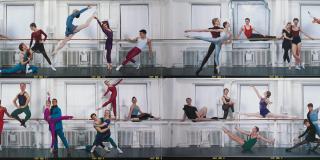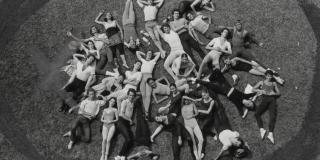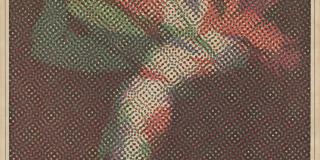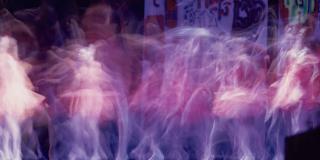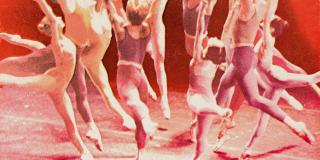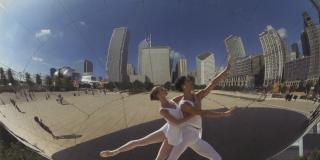Abdullah Jaffa Bey Khan had little reason to believe that ballet was for people like him. Ballet came from a distinctly elite tradition, formed in European courts and solidified in the 19th century as an art form for the pleasure and consumption of the upper classes. Khan–who took the name Robert Joffrey by high school in Seattle–knew he wanted to be a dancer. It was from this vantage point that Joffrey and his co-founder Gerald Arpino started a ballet company with a primary doctrine: that ballet was for everyone.
Despite The Joffrey Ballet’s significant cultural impact, its story has received scant attention until now. In 2017, the Jerome Robbins Dance Division acquired the entire Joffrey archive—the largest acquisition for the Library in a decade. The Joffrey + Ballet in the U.S., the first large-scale retrospective of the company, offers an unparalleled opportunity to delve into the history and legacy of The Joffrey Ballet through its archival materials.
In 1956, the company of six dancers traveled in a station wagon to perform in small towns across the country. Joffrey and Arpino celebrated dancers’ individuality and broadened representation on stage by cultivating dancers through attentive teaching and diverse choreography. They imagined a future for ballet that included the reconstruction of key works of dance history and new work by young choreographers that pulled from ballet, modern dance, and social dance. And they spread their view of ballet with appearances on television, allying with corporations, and courting celebrities. Over 70 years, the company has grown from six dancers to 40 to become a globally renowned force in the ballet world, from peripatetic motion and financial precarity to a secure, rooted home in Chicago.
This exhibition reveals the challenges, ingenuity, and dedication that it took to build a ballet company in the U.S. Ballet has spread across the country in the last hundred years; dance companies have sprouted from Alaska to Wyoming. The Joffrey seeded this growth by bringing ballet to more people–redefining what ballet is in the process and constructing the future of ballet in the U.S.
This exhibition is organized by The New York Public Library for the Performing Arts and curated by Dr. Julia Foulkes with assistance from Nicole Duffy.
Discover more about the exhibition with our free audio guide for The Joffrey + Ballet in the U.S., accessible on site or from anywhere on your mobile device.
Listen to the audio guide on Bloomberg Connects, the free arts and culture app. Bloomberg Connects is a third-party mobile app not owned or operated by NYPL. See privacy notice below.



